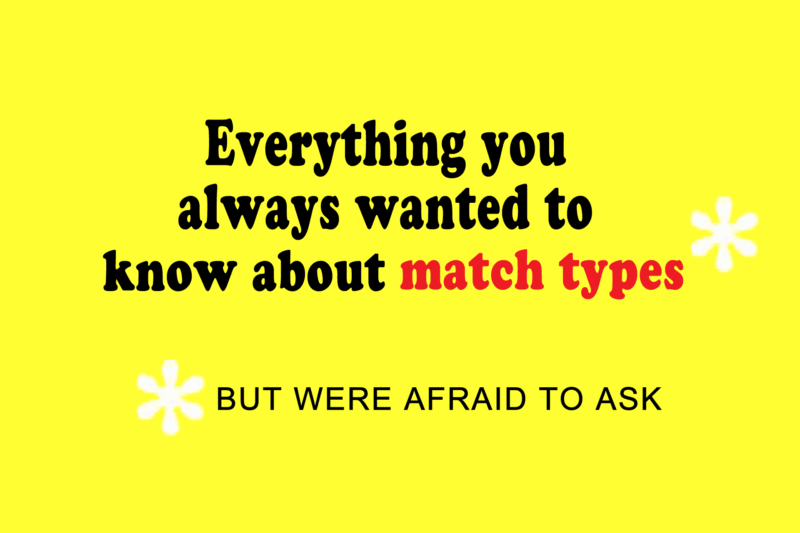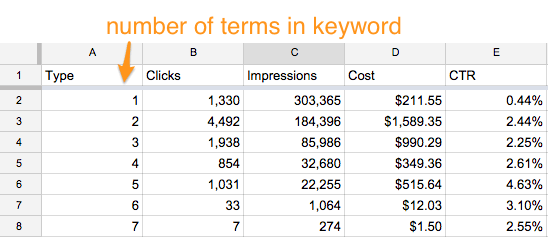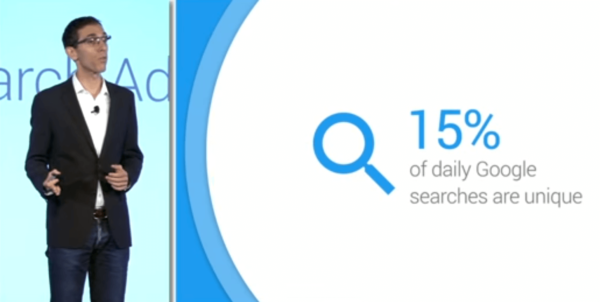Answers To The Match Type Questions You Were Afraid To Ask
Columnist and former Googler Frederick Vallaeys explains the various match types in AdWords and discusses some of the most useful applications of each.

Choosing the match type for keywords is one of the first decisions we all dealt with when we bought our first keywords in AdWords.
Yet despite being one of the most fundamental concepts in PPC — or maybe because of that — the topic of match types remains hotly debated. There’s always that nagging feeling that maybe we’re not doing it right but asking about such a fundamental topic may seem embarrassing.
Maybe that’s why there were so many anonymously submitted questions on the topic during the “Ask The SEMs” panel at SMX Advanced last week. So, for all of you who couldn’t attend — and for those who did, but want more — here are my thoughts on keyword match types.
Overview Of Match Types
Match types give advertisers a way to specify how closely queries should map to their keywords before Google enters their ad in the auction.
They range from broad match (where ads can show for queries that could be remotely related to the keyword) to exact match (where ads only show in cases where the query is extremely close to the keyword).
Here’s the table of match types from the AdWords help center:
Broad Match Modified (BMM) Is Not A Match Type — But You Need To Use It
Even though the table from Google shows five match type options, technically there are only four match types: exact, phrase, broad, and negative. The fifth option, broad match modified (BMM), is a broad match keyword with a special notation. Despite not being a true match type, it’s one of the most powerful options; when used correctly, it provides a lot of control to advertisers.
One downside of BMM not being a full fledged match type is that some new advertisers may not even know that it exists. It’s not shown anywhere in the UI, like here in the Editor:

The AdWords Editor shows that there are only 3 types of positive match types. Modified broad match is a variation of broad match that includes a “+” symbol.
BMM not being a match type also impacts our ability to do a few things easily, like filtering our keyword view to see just BMM keywords. Rather than using a match type filter, we have to to a search for keywords that include a “+” sign.
Another thing that’s made more complicated is that in tools like the AdWords Editor (or in code written in AdWords Scripts or the API), there’s no way to change a keyword from broad to modified broad with the flip of a switch. Instead you have to add the special notation — the “+” symbol before the words you want to be more closely matched to the query — when specifying the keyword. In Editor, that means we have to do 2 steps:
- find and replace a space with a space followed by a “+”
- prepend a “+” to the start of the keyword
Should I Add A “+” To All Words For BMM?
BMM is a mix between exact and broad match in that it lets advertisers specify which words Google gets to change and which ones should definitely be in the query. I see many advertisers who simply put a “+” in front of every word and consider their jobs done, but that’s not taking full advantage of BMM’s power.
Say you sell Xbox video games and consoles, but not any other types. Rather than using a keyword like +xbox +games, you could use a keyword like +xbox games to get more volume.
By not putting a “+” in front of games, you’re telling Google that it’s okay to maybe show the ad for related words like “xbox discs,” “xbox consoles,” “xbox programs,” etc., so long as the word “xbox” is included. Once you see the query data in the search terms report, you should act on it by adding good queries as keywords and adding irrelevant queries as negatives.
The Three Types Of Negative Keywords
By default, a negative keyword will prevent an ad from showing when all the words in the negative are present in the query. But did you know you can also combine negative keywords with the other match types to make them do slightly different things?
| Match Type | Notation | Example Use Case |
|---|---|---|
| regular negative | -free breakfast | If you don’t want clicks when both the word “free” and “breakfast” are somewhere in the query. |
| negative exact | -[hotels] | If you want to get clicks whenever a query includes the word hotels (like “Miami hotels”), but NOT when the query itself is just “hotels,” you’d add a broad match keyword “hotels” along with the negative exact -[hotels]. |
| negative phrase | -“hotel book” | If you sell hotel rooms but not books about hotels, the word order matters. Negative phrase match allows you to specify the order the words should be in when NOT to show an ad. |
Is Phrase Match Still Relevant?
This is a specific question that came up at SMX: Is there any point in using phrase match instead of modified broad?
The answer is definitely yes.
The difference between phrase and BMM is that phrase specifies the word order that the query must have. In most cases, the order of the words doesn’t change the intent of the query, but there are some instances where it does.
Take two e-commerce companies: one selling hotel rooms and the other selling coffee table books. For the travel company, the keyword “book hotel” would be highly relevant, whereas “hotel book” might not be. For the seller of books, the opposite is true. The only way to tell the search engine the target word order is through a phrase match keyword.
Am I Throwing Money Away With Broad Match Keywords?
The reason this question comes up is that many advertisers are concerned that the search engines take too much liberty when matching a broad keyword to a query. You may have a very specific keyword, like “marilyn monroe posters,” but see your ad shown for a search for the generic query “art.” Or, with the keyword “xbox games,” you might see your ad shown for “nintendo games.”
Even though it may lead to some low quality traffic, I believe broad match does have a place in PPC strategies. You just need to monitor it carefully so you don’t waste more money than needed while using broad match to learn something about how users are searching.
Broad keywords are a great way to discover what users are typing into the search box, and by using the search terms report to discover these queries, you can add them as new negative or positive keywords in an account.
Google’s VP of Ads Products, Jerry Dischler, said during the AdWords livestream on May 5th that 15% of daily searches on Google are unique.
This is, of course, a variation on the much older stat from Google that 20% of searches are unique over a 90-day period, but they both make the same point: Despite how Google is funneling users towards the same queries via autocomplete, users are still finding ways to express their individuality with some very unique queries.
While you can capture many of these queries with BMM, broad match will give you the highest level of coverage.
Do Long Tail Keywords Still Matter?
Adding long tail keywords to accounts makes sense, but only if you have the capacity to manage these additional terms. To get a sense of how much volume there is for keywords of different word counts and whether it’s worth focusing on these, you can use an AdWords Script that we’ve written to see how the click-through rate, conversion rate and ROAS changes as the word count increases.
The script reports data segmented by the word count in your keywords, as well as by match type. The report even breaks down the stats by the match type you’re using and the match type in terms of how your keyword compares to the query (because to Google, a broad match keyword that is exactly the same as the query is considered an exact match impression).

This free AdWords script from my company Optmyzr reports your metrics by match type and keyword length. This is data from one sample account that only uses keywords up to 7 words in length.
Download your own free copy of the script to report AdWords metrics by match type and word count, or get the Enhanced Script version which works at the MCC level and comes with additional settings when you sign up for Optmyzr.
Will My Ads Look Horrible If I Use Broad Match And DKI?
The answer is “probably,” but not for the reason you suspect. Dynamic Keyword Insertion (DKI) inserts the keyword that triggered the ad and NOT the user’s query. Hence, you’re not risking your ad looking terrible because of some random things the user is searching for.
However, your ad will probably not stand out very much because everyone else is using DKI. If it’s an important ad group with decent volume, it may be worth getting creative and coming up with a better ad. I wrote about ad text optimization not too long ago if you need a few ideas.
Should I Add Negatives For All My Keywords?
Another frequently asked question is this: When I add a new keyword in an ad group, should I add the same keyword as a negative in all other ad groups? The answer is, “Yes, but within reason.” The concern stems from the fact that Google doesn’t always show the ad for the keyword that is semantically the closest to the query.
For example, even when you have the keyword “belgian chocolates” in your account, Google may favor the ad for the keyword “dark chocolates” when someone searches for “belgian chocolates.”
Google does this when they either believe they can save you money (because the CPC is lower) or give you more exposure (because the ad rank is better), but it’s almost always undesirable from an advertiser’s perspective. After all, if you’re managing your account right, the keyword has a specific bid determined by conversion rate, and it has a landing page picked for its close relevance to the keyword — so that’s what Google should use.
But rather than proactively loading up your account with thousands of negatives and hitting the structural limits imposed by AdWords sooner, I think it makes sense to only add negatives when Google is actually doing what you don’t want them to. This means monitoring the search terms report for instances when a query for which you have the exact keyword maps to another keyword in the account.
First, try to add the negatives at the campaign level rather than in each ad group (so you don’t hit account keyword limits too soon). Within the campaign that has the ad group with the exact keyword, you can add the negatives at the ad group level.
Keep in mind that while this strategy makes sense to advertisers, there is a reason why Google didn’t show the ad you intended. When you block Google from showing what they think is best, your performance may actually decline as the alternative you leave Google is not one they like.
So, in conjunction with adding negatives, work on optimizing whatever it is that Google dislikes about the keyword you want them to pick.
Conclusion
As with everything in AdWords, it’s ultimately the data that will tell you what is the right thing to do. But it’s good to know the full capabilities of the system, the underlying architecture, and what others are doing to guide your own experimentation.
If there are match type issues I didn’t cover or ones you have another approach for, definitely post in the comments. There will be a session at SMX East, “The Battle of The Match Types,” so I expect this topic will remain top of mind for some time to come.
Contributing authors are invited to create content for Search Engine Land and are chosen for their expertise and contribution to the search community. Our contributors work under the oversight of the editorial staff and contributions are checked for quality and relevance to our readers. The opinions they express are their own.
Related stories
New on Search Engine Land

